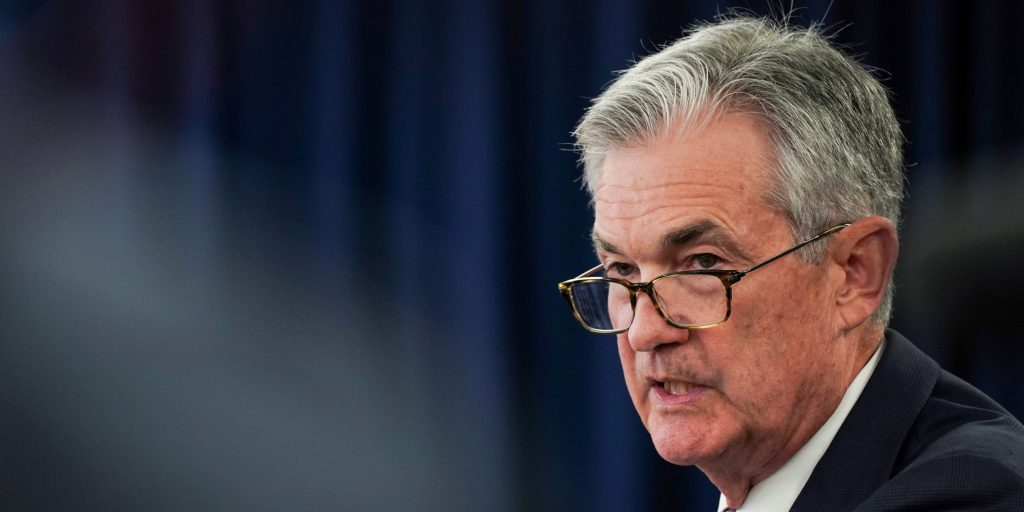- Fed Chair Jerome Powell threw some support behind a double-sized rate increase in May on Thursday.
- The Fed usually raises rates by 0.25 percentage points at a time, but high inflation sparked calls for a larger hike.
- Such an increase would significantly lift rates on mortgages, car loans, and savings-account interest.
Federal Reserve Chair Jerome Powell offered the clearest indication yet on Thursday that the central bank will soon issue a double-sized rate hike as it ramps up its fight to cool inflation.
The Fed's benchmark interest rate is its top tool for steering the economy, and after holding rates near zero through much of the pandemic, the central bank is reversing course. The Fed raised the rate from its record low by 0.25 percentage points in March in hopes of cooling the price surge. Yet with inflation trending at 41-year highs and Russia's invasion of Ukraine driving prices sharply higher, calls for more aggressive action have intensified.
Many Fed policymakers have suggested lifting the rate by 0.50 points at the central bank's May meeting, arguing the inflation problem warrants accelerating the hiking cycle and doing at least a few double-size increases.
Powell backed those quicker moves while speaking on a panel during the IMF's spring meeting on Thursday. The chair pointed to the Fed's tightening cycle from 2004 to 2006, noting the central bank raised rates through the period by 0.25 points at a time while inflation was slightly above 3%. Since inflation is "much higher now" and rates are still lower than they were back then, "it is appropriate" for the Fed to move "a little more quickly."
"We make these decisions at the meeting and we'll make them meeting by meeting, but I will say that 50 bp will be on the table for the May meeting," he added.
A double-sized rate hike would quickly ripple throughout the economy. A higher Fed rate leads to higher interest rates on everything from payday loans to savings-account interest. As the central bank continues on its rate-hike cycle, Americans can expect pricier mortgages, car loans, and credit-card interest, as well as larger payouts from their savings accounts.
Powell's Wednesday remarks confirm what markets have already been pricing in for weeks. Investors largely expect the Fed to raise rates by 0.50 points at its May, June, and July policy meetings, moves that would place the benchmark rate at roughly 2% by late July. That's up from the 1.5% markets were projecting just one month ago.
While expectations for further-out rate increases are mixed, markets are generally pricing in a 2.5% rate at the end of 2022. A benchmark rate that high hasn't been seen since July 2019.
The Fed isn't 'going to count on' a supply-chain recovery
The Fed is also changing the way it's factoring the supply-chain crisis into its rate decisions. The central bank's previous outlook saw supply chains healing throughout 2022 as economies reopened and businesses worked through their hefty backlogs. Yet the Russia-Ukraine conflict has prolonged such a rebound and introduced new challenges to global logistics.
As such, the Fed is "no longer going to count on help from supply-side healing," Powell said. Improvements to the shipping crisis would be "enormously helpful" in pulling inflation back to healthy levels, but the central bank is going to tackle the inflation problem without expectations of a near-term recovery, he added.
"If we get that, that would be great," Powell said. "But we're really going to be raising rates and getting expeditiously to levels that are more neutral, and then that are actually tightening policy if that turns out to be appropriate once we get there."

